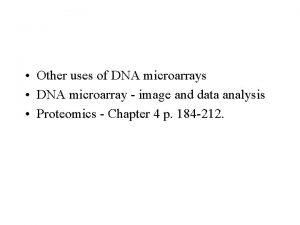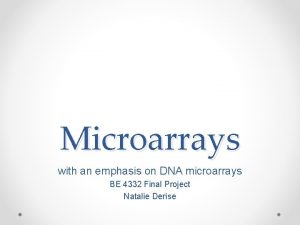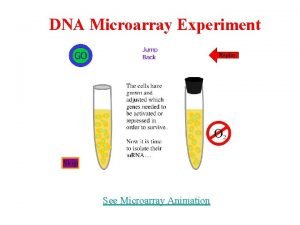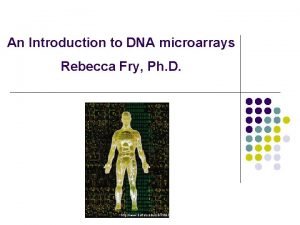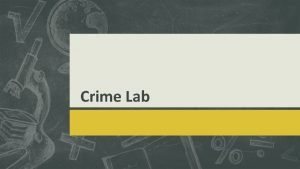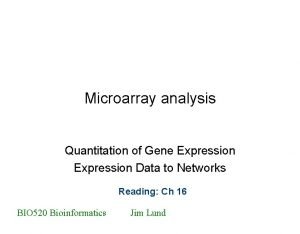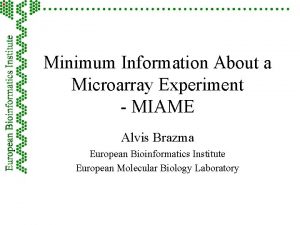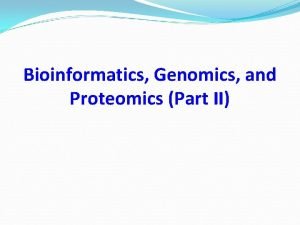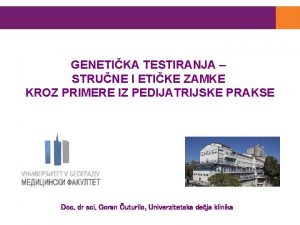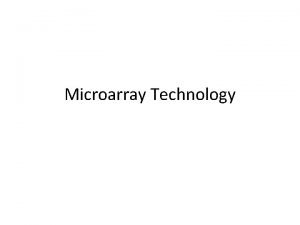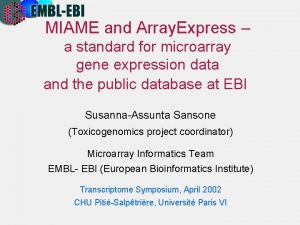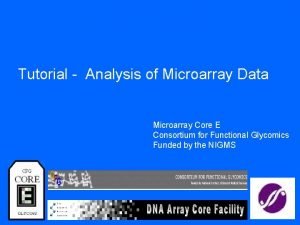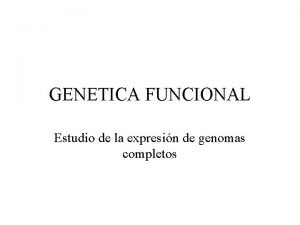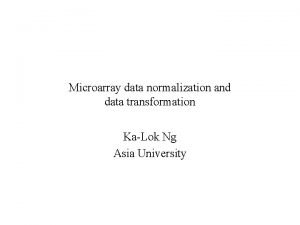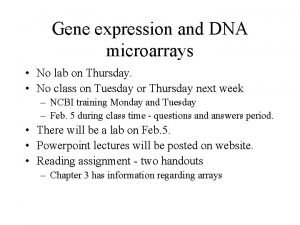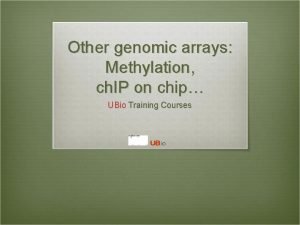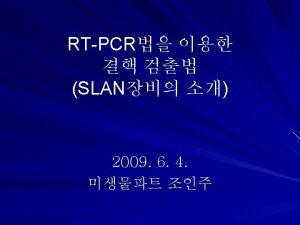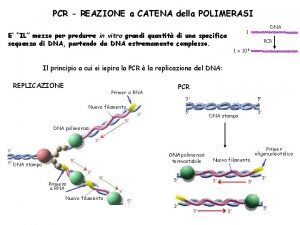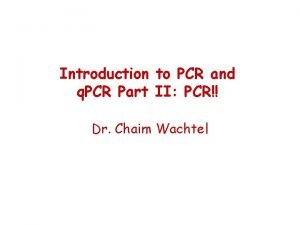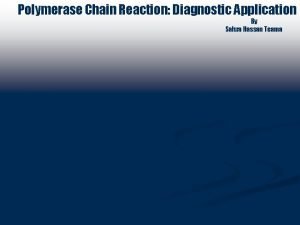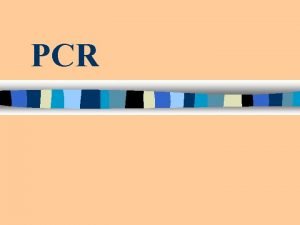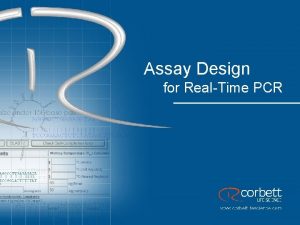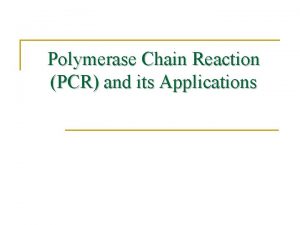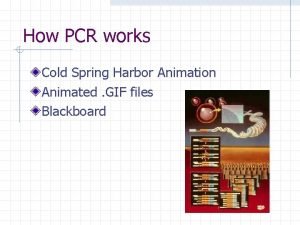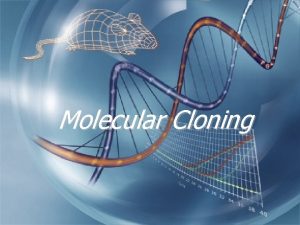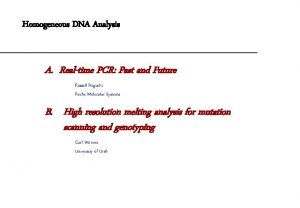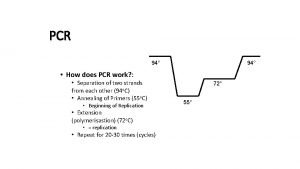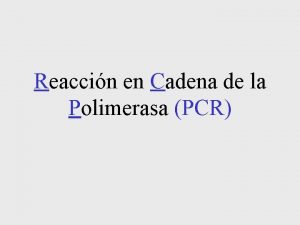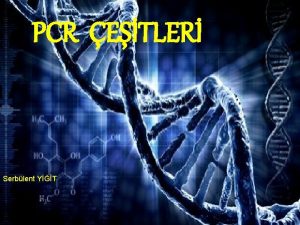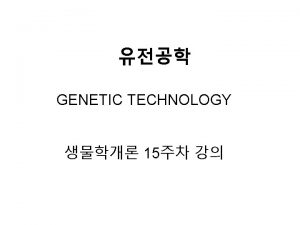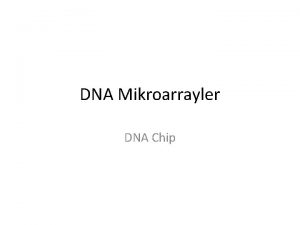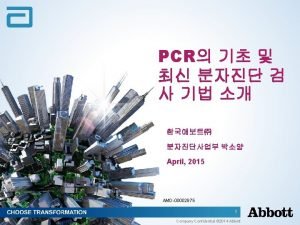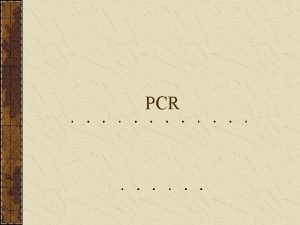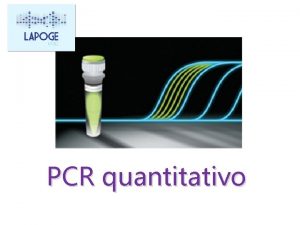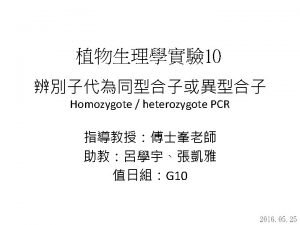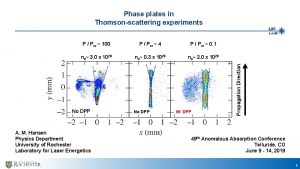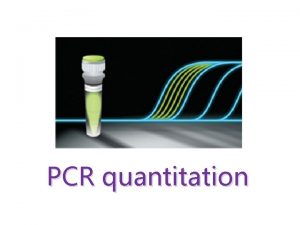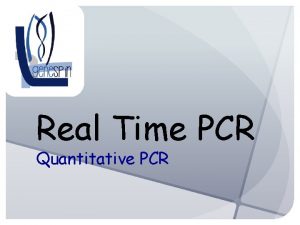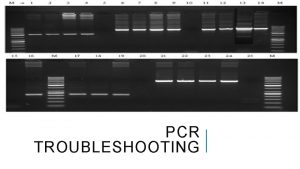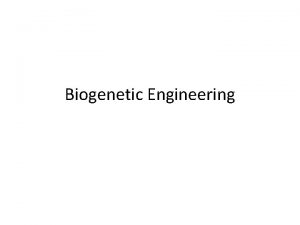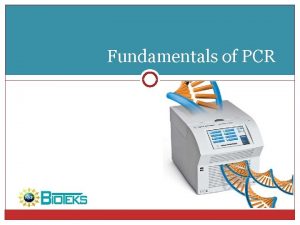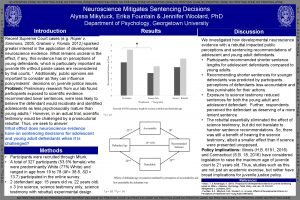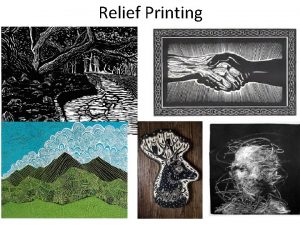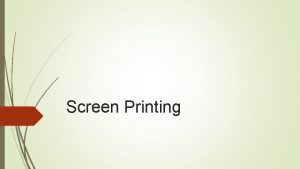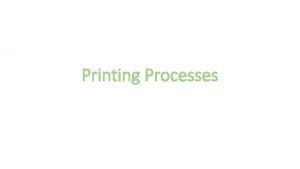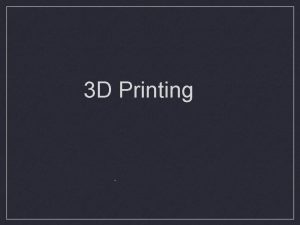DNA Microarray Microarray Printing 96 wellplate PCR Products








































- Slides: 40

DNA Microarray

Microarray Printing 96 -well-plate (PCR Products) 384 -well print-plate Microarray


Differential Expression • Each cell contains a complete copy of the organism’s genome • Cells are of many different types and state e. g. blood, nerve, skin cells, etc • What makes the cells different ? • Differential gene expression, i. e. , when, where and in what quantity each gene is expressed • On average, 40% of our genes are expressed at any given time

Functional genomics • The various genome projects have yielded the complete DNA sequences of many organisms. e. g. human, mouse, yeast, fruitfly, etc. • Human: 3 billion base-pairs, 30 -40 thousand genes. • Challenge: go from sequence to function, i. e. , define the role of each gene and understand how the genome functions as a whole.

Central Dogma • The expression of the genetic information stored in the DNA Molecule occurs in two stages: --transcription, during which DNA is transcribed into m. RNA; --translation, during which m. RNA is translated to produce a protein. • DNA m. RNA Protein c. DNA Arrays Tissue Arrays




The Central Dogma of Molecular Biology

Microarray Hybridization

Microarray Gene Expression Image

A Better Look

Image Analysis & Data Visualization Cy 3 Experiments Cy 5 Cy 3 Genes Underexpressed Overexpressed Cy 5 log 2 Cy 3 8 4 2 fold 2 4 8

New Data Spot. List Scan. Alyze/Gene. Pix Cluster Database Data Selection SOM K-means SVD Complete Data Table (cdt)

Ovarian Tumor Study M. Schaner Samples that should Cluster together do not


Data Normalization

Pool of Cell Lines Tumor Different amounts of starting material.

Different amounts of RNA in each channel

Differential labeling efficiency of dyes

Differential efficiency of hybridiz over slide surface

Differential efficiency of scanning in each channel.

Such biases have consequences: • Plotting the frequency of un-normalized intensities reveals the differential effect between the two c hannels.

How do we deal with this? Normalization: In general, an assumption is made that the average gene does not change. You must understand your experiment and data to judge whether that assumption is a good one. Usually true for gene expression experiments, but not necessarily for a. CGH or chromatin IP. Generally true for large arrays, but not for small " boutique" arrays.

Normalization : The R-I Plot • • • Data may have an intensity-dependent structure. Plot log 2(R/G) vs. log 10(R*G) to reveal this Reveals : variance in log ratios is greater at lower intensities. distribution may not be centered around zero.

Normalization: Loess log 2(R/G) R-I Plot R-IFollowing Plot, Raw Loess Data log 10(R*G)

Cluster Analysis • Cell Cycle example( Spellman 1988)

Overview of the Cell Cycle • Purpose: – To create two new cells by dividing one original cell

Cell Cycle: Key Concepts – All parts of original cell must be replicated and split between new cells – Each step must occur in precise manner and timing for successful cycle, and is strictly regulated – m. RNA and proteins for cell cycle genes are found at varying levels at different points of the cycle – Mutations causing malfunction in regulation can result in cancer

Yeast Cell Cycle

Cell Cycle: Basic Description http: //www. bmb. psu. edu/courses/biotc 489/notes/cycle. jpg



Cells grow out of synchrony.





 Microarray uses
Microarray uses Dna microarray
Dna microarray G c a t dna
G c a t dna Dna hybridization microarray
Dna hybridization microarray Dna replication vs pcr
Dna replication vs pcr Chapter 11 dna and genes
Chapter 11 dna and genes Bioflix activity dna replication lagging strand synthesis
Bioflix activity dna replication lagging strand synthesis Coding dna and non coding dna
Coding dna and non coding dna What are the enzymes involved in dna replication
What are the enzymes involved in dna replication Function of dna polymerase 3
Function of dna polymerase 3 Functional vs innovative products
Functional vs innovative products Coke vs pepsi sales
Coke vs pepsi sales Dna rna protein
Dna rna protein Minimum information about a microarray experiment
Minimum information about a microarray experiment Protein microarray
Protein microarray Hetrozigot
Hetrozigot Microarray
Microarray Microarray
Microarray Glycov
Glycov Estudio microarray
Estudio microarray Microarray data normalization and transformation
Microarray data normalization and transformation Microarray types
Microarray types Methylation & chip-on-chip microarray platform
Methylation & chip-on-chip microarray platform Fase plateau pcr
Fase plateau pcr Slan real time pcr
Slan real time pcr Cicli pcr
Cicli pcr Pcr q
Pcr q Pcr product change request
Pcr product change request Pcr q
Pcr q Pcr phases
Pcr phases Objectives of pcr
Objectives of pcr Gapdh size
Gapdh size Optical system
Optical system Tail pcr principle
Tail pcr principle Illustrate the steps in restriction digestion and pcr
Illustrate the steps in restriction digestion and pcr Polymerase chain reaction application
Polymerase chain reaction application Pcr gif animation
Pcr gif animation Illustration of the steps in restriction digestion and pcr
Illustration of the steps in restriction digestion and pcr Pcr abi
Pcr abi Advantages of pcr technique
Advantages of pcr technique Pasos del pcr
Pasos del pcr
